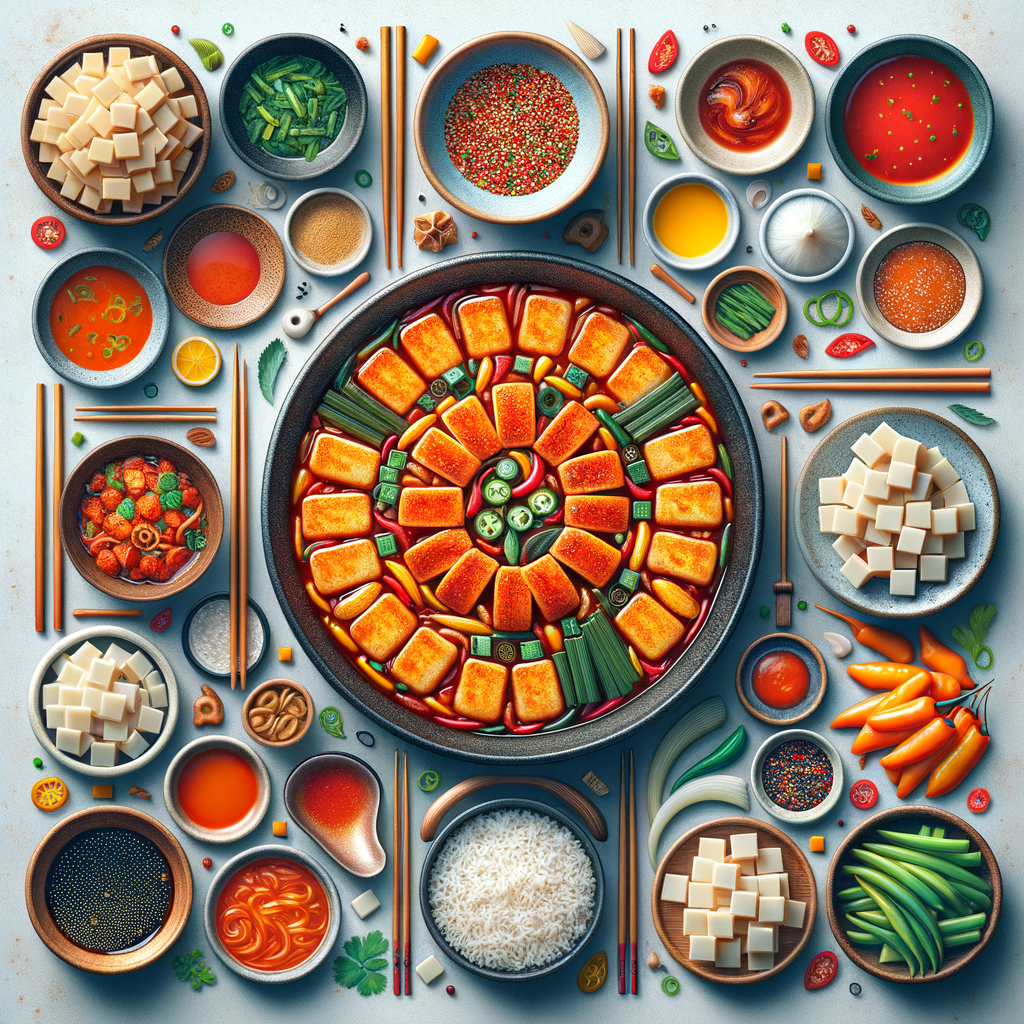🍳 Introduction to Omurice
Welcome to the delightful world of Korean cuisine! Today, we are diving into a dish that beautifully combines two beloved staples: rice and omelets. Known as Omurice, this dish is not only a feast for the taste buds but also a symbol of comfort and home-cooked meals in Korea. 🥢 Whether you’re a seasoned chef or a curious foodie, understanding Omurice will surely enrich your culinary journey.
🥘 The Origin of Omurice
The Birth of a Culinary Classic
Omurice, a portmanteau of “omelet” and “rice,” has its roots in Japan, where it was first popularized in the early 20th century. However, it quickly made its way to Korea, where it evolved into a dish that reflects the unique flavors and preferences of Korean cuisine. Initially served in Western-style restaurants, the dish gained immense popularity among locals and eventually became a staple in home cooking.
From Japan to Korea
In Japan, Omurice is typically made with fried rice flavored with ketchup and wrapped in a fluffy omelet. When it arrived in Korea, however, the recipe underwent significant transformations. Koreans began incorporating local ingredients such as gochujang (Korean chili paste) and kimchi, giving it a distinctively spicy kick that sets it apart from its Japanese counterpart.
🍚 Recipe for Authentic Korean Omurice
Ingredients You Will Need
Creating your own Omurice at home is easier than you might think! Here’s what you’ll need:
- 2 cups cooked rice (preferably day-old)
- 1 cup diced vegetables (carrots, peas, bell peppers)
- 1 cup cooked chicken or beef (optional)
- 2 tablespoons soy sauce
- 1 tablespoon gochujang (Korean chili paste)
- 3 large eggs
- Salt and pepper to taste
- Cooking oil for frying
Step-by-Step Instructions
Follow these simple steps to create your own delicious Omurice:
- Prepare the Fried Rice: In a large skillet, heat some oil over medium heat. Add the diced vegetables and sauté until tender. If using meat, add it now and cook until heated through.
- Add Flavors: Stir in the cooked rice, soy sauce, and gochujang. Mix everything well until the rice is evenly coated with the sauces. Season with salt and pepper to taste.
- Make the Omelet: In another pan, whisk the eggs together with a pinch of salt. Heat oil in the pan over medium-low heat and pour in the eggs. Cook until the edges start to set but the center is still slightly runny.
- Assemble: Place a generous serving of fried rice on one half of the omelet. Carefully fold the other half over to cover the rice.
- Serve: Slide the Omurice onto a plate and drizzle with additional ketchup or gochujang for an extra flavor boost!
🌍 Regional Features of Omurice
A Dish with Local Twists
Korea’s diverse regions have their unique takes on Omurice. For instance:
- The coastal regions often incorporate seafood into their fried rice, adding shrimp or squid for an oceanic twist.
- The mountainous areas may feature wild greens or mushrooms as part of their filling, showcasing local produce.
This adaptability makes Omurice not just a meal but also a reflection of regional ingredients and culinary traditions across Korea.
The Street Food Culture
You can find Omurice not only in homes but also at street food stalls and casual eateries throughout Korea. Vendors often serve it with a side of pickled radish or kimchi, enhancing its flavor profile while providing a satisfying crunch. This street food culture showcases how accessible and beloved this dish has become among locals and tourists alike! 🌟
😋 Taste Profile of Omurice
A Symphony of Flavors
The taste profile of Omurice is truly captivating. The combination of fluffy omelet with savory fried rice creates an inviting texture that is both comforting and satisfying. The addition of gochujang introduces a delightful spiciness that contrasts beautifully with the sweetness of ketchup often drizzled on top.
- The savory notes: From soy sauce and seasoned vegetables provide depth.
- The sour notes: If you add pickled radish or kimchi, they introduce acidity that balances out richness.
This intricate balance makes each bite an experience worth savoring! 😍
🏛️ Cultural Significance of Omurice
A Symbol of Comfort Food
In Korean culture, food plays an essential role in family gatherings and celebrations. Omurice stands out as a beloved comfort food that evokes feelings of nostalgia for many Koreans. It’s often prepared for birthdays or special occasions as it symbolizes warmth, care, and love from those who cook it.
.Omurice, KoreanCuisine, FoodCulture, ComfortFood, Recipe


